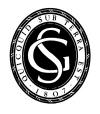| Online: | |
| Visits: | |
| Stories: |

| Story Views | |
| Now: | |
| Last Hour: | |
| Last 24 Hours: | |
| Total: | |
100 Great Geosites nomination: The Arnaboll Thrust
 Our first #100geosite nomination blog comes from Rob Butler, Professor of Tectonics at the University of Aberdeen, and Chair of our Geoconservation Committee.
Our first #100geosite nomination blog comes from Rob Butler, Professor of Tectonics at the University of Aberdeen, and Chair of our Geoconservation Committee.
“When a geologist finds…gneiss overlying gently inclined sheets of
fossiliferous quartzite, shale and limestone, he may be excused if he
begins to wonder whether he himself is not really standing on his head.”
So wrote Archibald Geikie in 1884 in coming face to face with what we now call the Arnaboll Thrust, on the far NW of Scotland.
It was here that Geikie coined the term “thrust”, for a type of break in the Earth’s crust where rocks from lower stratigraphic positions are pushed over higher ones. Often, they are recognised because older rocks have been pushed up over younger ones.
He published his ideas in Nature in 1884, stating;
“By a system of reversed faults, a group of strata is made to cover a great breadth of ground and actually to overlie higher members of the same series. The most extraordinary dislocations, however, are those to which for distinction we have given the name of Thrust-planes. They are strictly reversed faults, but with so low a hade that the rocks on their upthrown side have been, as it were, pushed horizontally forward.”
In the case of the Arnaboll Thrust, the much older Lewisian gneisses lie structurally above the light-coloured quartz arenites of the Lower Cambrian Pipe Rock.
But the importance of the Arnaboll Thrust for our science – arguably one of the top five global sites for structural geology – comes principally from the work of Charles Lapworth.
Not only did he establish the key role of thrust tectonics in the NW Highlands, he also carefully detailed the importance of chiefly sub-horizontal displacements in mountain building. And he went on to use these outcrops to show how deformation creates strongly sheared, weak rocks (mylonites) that serve to localise the thrusting process.
These outcrops continue to inspire structural geologists from all over the World. Some may even to be driven to the mental gymnastics excused by Geikie.
- If you would like to write a blog about your favourite geosite, as part of the 100 Great Geosites project, write to us at [email protected]. Visit our Flickr page to see the nominations so far!
![]()
Source: http://blog.geolsoc.org.uk/2014/03/28/100-great-geosites-nomination-the-arnaboll-thrust/





